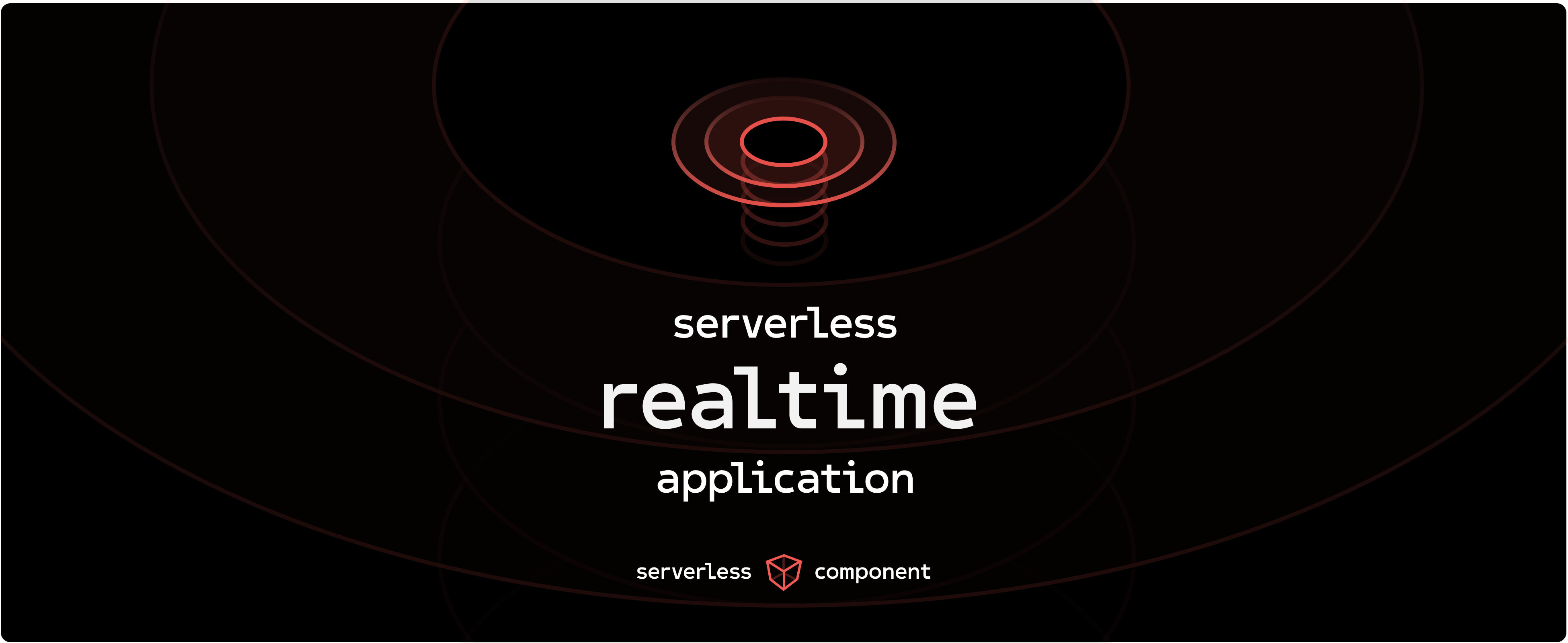@serverless/realtime-app
v1.0.5
Published
[](http://serverless.com)
Downloads
21
Readme
Deploy a Full-Stack Realtime App in seconds using Serverless Components. Just provide your frontend code (powered by the website component), and your backend code (powered by the socket component).
Great use-cases for this project are: Chat Apps, Bots, Notification Systems, Charting Dashboards, Stock Tickers & more. As always, consider a serverless stack like this if you are looking to deliver software or features with extremely low overhead.
1. Install
$ npm install -g @serverless/components2. Create
$ mkdir my-realtime-app && cd my-realtime-appthe directory should look something like this:
|- backend
|- socket.js
|- frontend
|- index.html
|- serverless.yml
|- .env # your development AWS api keys
|- .env.prod # your production AWS api keys
the .env files are not required if you have the aws keys set globally and you want to use a single stage, but they should look like this.
AWS_ACCESS_KEY_ID=XXX
AWS_SECRET_ACCESS_KEY=XXXthe socket.js file should minimally look something like this:
on('default', async (data, socket) => {
socket.send(data)
})
For more info on working with the socket.js file, check out the socket component docs.
To see a full example of an application built with this, check out this Chat Application.
3. Configure
# serverless.yml
name: my-realtime-app
stage: dev
RealtimeApp:
component: "@serverless/realtime-app"
inputs:
name: my-realtime-app
description: My Realtime App
region: us-east-1
# backend config to be passed to the socket component
backend:
# path to the backend code that contains the socket.js file
code: ./backend
memory: 512
timeout: 10
env:
TABLE_NAME: users
# frontend config to be passed to the website component
frontend:
# path to the directory that contains your frontend code
# if you're using a framework like React, that would be the root of your frontend project, otherwise it'd be where index.html lives.
# default is './frontend'
code: ./static
# if your website needs to be built (e.g. using React)...
# default is "undefined"
build:
# the path to the build directory. default is ./build
dir: ./dist
# the build command
command: npm run build # this is the default anyway!
# you can provide an env file path (relative to the code path above) to be generated for use by your frontend code. By default it's './src/env.js'
envFile: ./frontend/src/env.js
# the contents of this env file
# the backend api url will be injected by default
# under the "urlWebsocketApi" key
env:
SOME_API_URL: https://api.com4. Deploy
realtime-app (master)$ ️components
RealtimeApp › outputs:
frontend:
url: 'http://realtimeapp-lwmb8jd.s3-website-us-east-1.amazonaws.com'
env: undefined
backend:
url: 'wss://rzrqzb6z4h.execute-api.us-east-1.amazonaws.com/dev/'
env: []
14s › dev › RealtimeApp › done
realtime-app (master)$
5. Example
You can see a full Chat Application that uses this Component in the example folder. It leverages AWS DynamoDB to maintain state of who is connected, so that messages can be sent out to the appropriate connection IDs.
You can also see how this Component can be used programmatically in the Chat App Component's source code.
6. Pricing
AWS API Gateway Websockets Pricing https://aws.amazon.com/api-gateway/pricing/#WebSocket_APIs
AWS Lambda Pricing https://aws.amazon.com/lambda/pricing/
New to Components?
Checkout the Serverless Components repo for more information.

